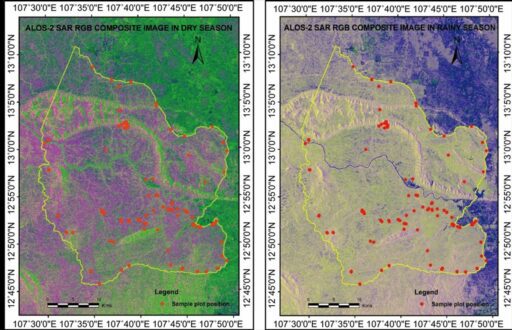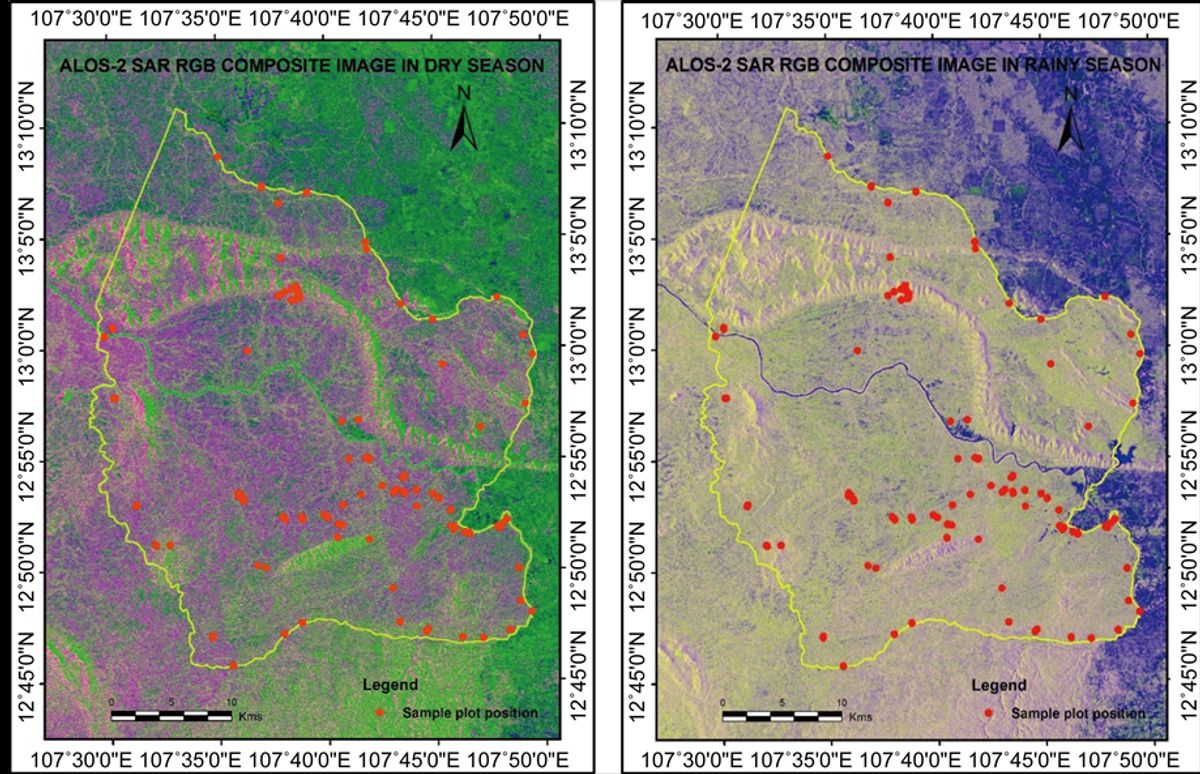Table of Contents
Dive into the intricate world of tree data structures with our beginner’s guide, ‘Unraveling the Branches.’ Starting from the fundamental concepts, this guide will take you through various types of trees, their properties, and traversal methods. You will learn about binary trees and binary search trees, their implementation, and their role in efficient data handling. The journey continues with advanced tree structures like AVL and Red-Black trees, leading to their practical applications in algorithms, databases, machine learning, and more. Embark on this educational adventure to understand how trees are essential in organizing and managing complex data.
Key Takeaways
- Trees are versatile data structures that organize data hierarchically, and understanding them is crucial for efficient problem-solving in computer science.
- Binary trees and binary search trees (BSTs) are fundamental to many algorithms and data management systems, with BSTs enabling fast data retrieval and update operations.
- Advanced tree structures such as AVL and Red-Black trees are designed for self-balancing to maintain optimized search times even after numerous insertions and deletions.
- Tree data structures are not limited to binary forms; structures like B Trees and B+ Trees play a critical role in database indexing and filesystems due to their ability to handle large amounts of data.
- From machine learning’s decision trees to network routing, trees find diverse applications in the real world, demonstrating their importance beyond theoretical constructs.
Fundamentals of Tree Data Structures


Defining Trees and Their Terminology
In the world of data structures, a tree stands as a non-linear model that simulates a hierarchical system. Unlike arrays or linked lists, which are linear, trees allow for a representation of data with multiple levels, often used to reflect real-world structures such as file systems or organizational charts.
A tree consists of nodes connected by edges, with one node designated as the root. This root is the starting point from which all other nodes branch out. Each node in the tree can have zero or more child nodes, and nodes with no children are referred to as leaf nodes. The height of a tree is a measure of the longest path from the root to a leaf, and the depth of a node is the length of the path from the root to that node.
Trees are fundamental in various applications, from representing hierarchical data in databases to enabling efficient search operations in binary search trees.
Understanding the terminology is crucial for grasping the more complex concepts that will be discussed later in this guide. Here’s a quick reference list of common tree-related terms:
- Node: The basic unit of a tree.
- Root: The topmost node of a tree.
- Edge: The connection between two nodes.
- Child: A node that is a descendant of another node.
- Parent: A node that has one or more children.
- Leaf: A node with no children.
- Height: The length of the longest path from the root to a leaf.
- Depth: The length of the path from the root to a specific node.
Types of Trees: From Generic to Binary and Beyond
The world of tree data structures is rich and varied, encompassing a range of types each suited to specific applications. Trees are a fundamental component in organizing and managing data, and their types extend far beyond the basic generic tree. A generic tree is a non-linear data structure with a hierarchical nature, where each node can have any number of child nodes.
In contrast, a binary tree is a more structured variant where each node has at most two children. This leads to the specialized form known as the Binary Search Tree (BST), which maintains a specific order to allow for efficient searching and sorting operations. Other advanced trees like AVL, Red-Black, B, and B+ trees offer solutions to specific problems, such as maintaining balance or optimizing disk storage.
The choice of tree type is crucial as it directly impacts the efficiency of data operations and the complexity of algorithms.
Here is a quick overview of some common tree types:
- Generic Tree
- Binary Tree
- Binary Search Tree
- AVL Tree
- B Tree
- B+ Tree
- Red-Black Tree
Each of these trees serves a unique purpose, from simplifying data management to enhancing search efficiency. As we delve deeper into tree data structures, we’ll explore the nuances and applications of each type.
Understanding Tree Traversal: Inorder, Preorder, and Postorder
Tree traversal is a critical concept in the study of tree data structures, allowing us to visit all the nodes of a tree in a systematic manner. Inorder traversal ensures that we visit the left subtree, the node, and then the right subtree. This approach is particularly useful for binary search trees (BSTs) as it retrieves data in sorted order.
Preorder traversal involves visiting the node before its subtrees, making it ideal for creating a copy of the tree or expressing the structure in a way that can be reconstructed later. Postorder traversal, on the other hand, visits the node after its subtrees, which is useful for deleting the tree or evaluating an expression tree.
Understanding these traversal methods is essential for algorithm design and problem-solving involving trees. They form the basis for more complex operations and are integral to the efficiency of many algorithms.
Here is a summary of the traversal techniques and their common uses:
- Inorder: Retrieve data in sorted order (for BSTs)
- Preorder: Copy or serialize the tree
- Postorder: Delete or evaluate the tree
Binary Trees and Binary Search Trees (BSTs)
Binary Tree Basics: Structure and Properties
A binary tree is a hierarchical data structure where each node has at most two children, commonly referred to as the left and right child. The beauty of a binary tree lies in its simplicity and foundational role in more complex tree structures.
In a binary tree, each node contains three components:
- A data element
- A reference to the left child
- A reference to the right child
The structure of a binary tree ensures that each child node has one and only one parent, leading to a clear hierarchical organization.
Binary trees can be categorized based on their properties, such as:
- Full Binary Tree: Every node other than the leaves has two children.
- Complete Binary Tree: All levels are completely filled except possibly the last level, which is filled from left to right.
- Perfect Binary Tree: All internal nodes have two children and all leaves are at the same level.
- Balanced Binary Tree: The height of the two subtrees of any node differ by at most one.
Understanding these properties is crucial for analyzing the efficiency of tree operations and algorithms.
Binary Search Trees: Concept and Operations
A Binary Search Tree (BST) is a pivotal data structure that facilitates efficient searching, insertion, and deletion operations. Each node in a BST contains a unique key and references to its left and right children, ensuring that for any given node, all keys in the left subtree are less than the node’s key, and all keys in the right subtree are greater.
The operations of a BST are fundamental to its utility:
- Insertion: Adding a new node while maintaining the BST property.
- Deletion: Removing a node and reorganizing the tree to preserve order.
- Searching: Finding whether a node with a specific key exists in the tree.
The elegance of a BST lies in its ability to reduce the time complexity of fundamental operations to O(log n) on average, where n is the number of nodes in the tree. However, this efficiency is contingent upon the tree being balanced, as an imbalanced tree can degrade to O(n) performance.
Implementing BSTs: Insertion, Deletion, and Searching
Binary Search Trees (BSTs) are a cornerstone of efficient data management, allowing for fast retrieval, insertion, and deletion of elements. The operations on a BST hinge on the property that for any given node, all elements in its left subtree are smaller, and all elements in its right subtree are larger.
- Insertion: To insert a new element, we begin at the root and traverse the tree, deciding at each step to move left or right based on the element’s value, until we find an appropriate leaf position.
- Deletion: Deletion can be more complex, involving three main scenarios: removing a leaf node, a node with one child, or a node with two children, each requiring a different approach.
- Searching: Iterative or recursive algorithms can be employed to search for a value, traversing the tree in a similar manner to insertion until the desired value is found or the search concludes unsuccessfully.
Mastery of these operations is essential for leveraging the full potential of BSTs in applications ranging from database indexing to in-memory data structures. Understanding the nuances of each operation ensures efficient data handling and optimal tree performance.
Advanced Tree Structures and Their Applications
Balancing Act: Exploring AVL Trees
AVL trees, named after their inventors Adelson-Velsky and Landis, are a type of self-balancing binary search tree. Each node in an AVL tree maintains an extra piece of information: its height balance factor. This factor is crucial for ensuring the tree remains balanced after insertions and deletions, which in turn guarantees that operations such as search, insert, and delete can be performed in O(log n) time.
The balance factor of a node is the difference between the heights of its left and right subtrees. An AVL tree requires that this factor be no more than 1 in absolute value for every node, which ensures that the tree remains approximately balanced at all times. Here’s a quick reference for the balance factors and their meanings:
| Balance Factor | Left Subtree Height | Right Subtree Height | Tree State |
|---|---|---|---|
| -1 | Shorter | Taller | Right-heavy |
| 0 | Equal | Equal | Perfectly balanced |
| 1 | Taller | Shorter | Left-heavy |
Maintaining balance is not just about preserving the tree’s shape; it’s about optimizing search efficiency. A well-balanced tree minimizes the number of comparisons needed to find any element, which is especially important for large datasets.
When a tree becomes unbalanced, AVL tree algorithms perform rotations—single or double—to restore the balance. These rotations are the key to AVL trees’ self-balancing property and are what differentiate them from other binary search trees.
Color Coding Efficiency: Red-Black Trees
Red-Black Trees are a type of self-balancing binary search tree, where each node contains an extra bit for denoting the color of the node, either red or black. This color-coding is not just for show; it’s a critical feature that ensures the tree remains approximately balanced at all times, which in turn guarantees that the tree operations (insertion, deletion, and search) can be performed in O(log n) time.
The beauty of Red-Black Trees lies in the way they maintain balance with only a small overhead of color information. By following specific rules for node coloring and rotations during insertions and deletions, these trees self-adjust to preserve optimal performance.
Red-Black Trees are widely used in computing, with applications ranging from associative arrays to implementing other abstract data types. The properties that make them so efficient are their guaranteed balancing and the relatively simple algorithms required for their maintenance.
Here’s a quick overview of the key properties that Red-Black Trees must satisfy:
- Every node is either red or black.
- The root is always black.
- All leaves (NIL nodes) are black.
- If a node is red, then both its children are black.
- Every path from a given node to any of its descendant NIL nodes goes through the same number of black nodes.
Beyond Binary: B Trees and B+ Trees
Moving beyond the binary structure, B Trees and B+ Trees represent a significant advancement in the efficiency of tree data structures, particularly in database systems and file storage. B Trees are known for their ability to maintain balanced data distribution across nodes, which is crucial for minimizing disk reads and writes.
B+ Trees, an extension of B Trees, offer an optimized structure for range queries and sequential data access. They are multi-level data structures, with a root node at the top and one or more levels of internal nodes below it. The leaf nodes at the bottom level contain all the actual data entries and are linked, facilitating efficient full-range scans.
B+ Trees are particularly well-suited for systems that read and write large blocks of data. Their design ensures that all leaf nodes are at the same depth, which results in consistent and predictable access times.
The following table compares the key characteristics of B Trees and B+ Trees:
| Feature | B Tree | B+ Tree |
|---|---|---|
| Node Structure | Contains keys and data | Contains keys, data is in leaf nodes |
| Data Access | Direct access to data at each node | Sequential access through leaf nodes |
| Range Queries | Less efficient | More efficient |
| Storage Utilization | High | Higher due to data concentration in leaf nodes |
Understanding these advanced tree structures is essential for tackling complex data storage challenges and optimizing search operations.
Tree Data Structures in Algorithms and Problem Solving


Algorithm Analysis with Trees
Trees are a fundamental part of algorithm analysis, providing a visual and structural representation of data that can be crucial for understanding and optimizing algorithms. The efficiency of many algorithms depends on the underlying tree structure, whether it’s a simple binary tree or a more complex self-balancing tree like an AVL or Red-Black tree.
When analyzing algorithms, trees help in visualizing the steps taken and the complexity involved. For instance, the time complexity of searching, inserting, or deleting elements in a binary search tree (BST) is on average O(log n), but this can degrade to O(n) if the tree becomes unbalanced. This is where self-balancing trees come into play, ensuring that operations remain efficient by maintaining a balanced structure.
Trees are not just theoretical constructs; they have practical implications in algorithm design and performance. By using trees, developers can ensure that their algorithms are both robust and efficient, capable of handling large datasets with ease.
Here’s a quick reference to the complexities of common tree operations in a balanced tree structure:
| Operation | Average Case | Worst Case |
|---|---|---|
| Search | O(log n) | O(log n) |
| Insert | O(log n) | O(log n) |
| Delete | O(log n) | O(log n) |
Understanding these complexities is essential for algorithm analysis and can be a deciding factor in the choice of data structure for a particular problem.
Designing Algorithms with Tree Data Structures
When designing algorithms, tree data structures offer a versatile framework for organizing data in a hierarchical manner. Trees enable efficient data retrieval, insertion, and deletion operations, which are crucial for various algorithmic solutions. For instance, binary search trees (BSTs) are widely used due to their ability to maintain a sorted sequence of elements, allowing for quick searches comparable to binary search in arrays.
The design of an algorithm using trees often involves considering the type of tree that best suits the problem at hand. Here’s a list of common tree types and their typical use cases:
- Generic Trees: For representing non-linear data with any number of children per node.
- Binary Trees: Used when data naturally forms a hierarchy with a binary choice at each level.
- AVL Trees: Ideal for maintaining a balanced tree to ensure O(log n) operations.
- Red-Black Trees: Similar to AVL trees but with relaxed balancing, useful for faster insertion and deletion.
- B+ Trees: Commonly used in databases for indexing due to their ability to handle large amounts of data efficiently.
The choice of tree structure is pivotal in algorithm design, as it directly impacts the performance and complexity of the operations involved.
Understanding the specific properties and operations of each tree type is essential for crafting effective algorithms. For example, self-balancing trees like AVL and Red-Black trees are preferred when the algorithm requires maintaining a balanced structure after multiple insertions and deletions, which is critical for preserving performance.
Case Studies: Trees in Action
Trees are not just theoretical constructs; they have practical applications that solve real-world problems. Case studies across various domains demonstrate the versatility of tree data structures. For instance, decision trees are a cornerstone in machine learning for classification tasks. They help in breaking down a dataset into smaller subsets while at the same time an associated decision tree is incrementally developed.
In the realm of web development and business intelligence, tree structures facilitate efficient data organization and retrieval. Websites like SethT provide resources on data architecture, which often leverage trees for managing and querying data effectively.
The adaptability of trees in data representation and problem-solving is remarkable. They are used in network routing to optimize paths, in file systems for hierarchical storage, and in databases for indexing, which speeds up data retrieval.
Below is a summary of tree applications in different sectors:
- Machine Learning: Decision trees for classification and regression.
- Web Development: DOM trees for structuring web pages.
- Business Intelligence: Trees for organizing and visualizing data.
- Databases: B-trees and B+ trees for indexing and efficient search.
Practical Applications and Real-World Examples of Trees


Trees in Database Systems: Indexing and Retrieval
In the realm of database systems, trees play a pivotal role in indexing and retrieval operations. The efficiency of a database is often contingent upon how quickly it can perform these tasks. Binary Search Trees (BSTs), AVL Trees, and B-Trees are among the most commonly used tree data structures in databases.
- BSTs are favored for their simplicity and ease of implementation. They facilitate quick data insertion and lookup by maintaining a sorted structure.
- AVL Trees are a type of self-balancing BST that ensures the tree remains balanced after insertions and deletions, thus maintaining optimal search times.
- B-Trees are ideal for databases that handle large volumes of data. They are designed to minimize disk reads and are widely used in database indexing.
The use of tree data structures in databases significantly enhances the speed and efficiency of data retrieval, making them an indispensable tool in managing large datasets.
Understanding the nuances of these tree-based systems is crucial for optimizing database performance. As databases evolve, the implementation of advanced tree structures becomes increasingly important in supporting the scalability and speed required by modern applications.
Machine Learning: Understanding Decision Trees
In the realm of machine learning, decision trees are pivotal in data analysis and predictive modeling. They are a type of supervised learning algorithm that is commonly used to model and predict outcomes based on input data. A decision tree is a graphical representation where each internal node signifies a decision point, branches indicate the possible outcomes, and leaf nodes represent the final decision or class label.
The structure of decision trees makes them intuitive and accessible, allowing for easy visualization and interpretation of the decision-making process. This characteristic is particularly beneficial in fields where explaining the rationale behind predictions is crucial.
Decision trees are versatile and can handle both categorical and numerical data, making them suitable for a wide range of applications. Their ability to simplify complex decision-making processes into a series of binary choices is what sets them apart in the machine learning landscape.
While decision trees are powerful, they are not without limitations. One of the main challenges is the risk of overfitting, where the model becomes too tailored to the training data and performs poorly on unseen data. To mitigate this, techniques such as pruning are employed to trim the tree and improve generalization.
Network Routing and File Systems: Trees at Work
In the realm of network routing and file systems, trees play a pivotal role in structuring and managing data efficiently. The hierarchical nature of trees makes them ideal for representing network paths and nested file directories, allowing for quick searches and updates.
For instance, in network routing, trees are used to map out paths for data packets to travel across various nodes. This ensures that data reaches its destination via the most efficient route. Similarly, file systems utilize trees to organize files and directories, making retrieval and storage operations more streamlined.
The use of trees in these systems is not just a matter of convenience but a fundamental aspect of their design, ensuring scalability and performance.
Understanding the detailed explanation of network architecture types, including peer-to-peer and client-server models, is crucial. These architectures leverage trees to manage connections and data flow, highlighting the importance of a stable network for seamless communication and data transfer.
Conclusion
As we’ve journeyed through the intricate branches of tree data structures, from the foundational concepts to advanced implementations, we’ve seen how versatile and essential they are in the realm of computer science. Whether it’s the simplicity of binary trees or the complexity of self-balancing AVL and Red-Black trees, each structure offers unique benefits and challenges. Understanding tree traversal methods and the role of trees in decision-making processes empowers us to harness their full potential. As you continue to explore data structures, remember that the principles of trees are fundamental to efficient algorithm design and problem-solving. Keep branching out your knowledge, and you’ll find that trees are not just a topic of study but a robust tool in your programming arsenal.
Frequently Asked Questions
What is a tree data structure and why is it important?
A tree data structure is a hierarchical model that simulates a branching structure, consisting of nodes connected by edges. It is important because it reflects various real-world systems, facilitates efficient data organization, allows for fast retrieval, insertion, and deletion operations, and is fundamental to many algorithms and applications, such as file systems and databases.
How does a binary search tree differ from a regular binary tree?
A binary search tree (BST) is a special kind of binary tree where each node has at most two children, and the left child’s value is less than its parent’s value, while the right child’s value is greater. This property allows for efficient searching, as it provides a way to systematically skip half of the tree when looking for a specific value.
What are AVL trees and how do they maintain balance?
AVL trees are self-balancing binary search trees that maintain balance by ensuring that the heights of two child subtrees of any node differ by at most one. If at any time they differ by more than one, rebalancing is done through rotations to restore this property.
What are the benefits of using Red-Black trees over other types of trees?
Red-Black trees are self-balancing binary search trees that provide a good worst-case guarantee for insertion, deletion, and search operations. They are beneficial because they ensure the tree remains approximately balanced at all times, which prevents the performance from degrading to that of a linked list.
In what ways are tree data structures used in machine learning?
In machine learning, tree data structures are prominently used in decision trees, which are models for classification and regression. They help in making decisions based on the data’s features, leading to predictions or classifications. Trees are also used in ensemble methods, such as random forests, which combine multiple decision trees for more accurate and robust predictions.
How are tree structures utilized in database indexing?
Trees, especially B-trees and B+ trees, are commonly used in database indexing to organize and manage data efficiently. They allow databases to perform quick searches, insertions, and deletions, which is crucial for maintaining high performance in large-scale data storage and retrieval operations.





